| Columns Retired Columns & Blogs |
Museatex Hybrid 6 loudspeaker Measurements
Sidebar 1: Measurements
The impedance magnitude and phase for the Hybrid 6 are shown in fig.1. (Both channels were essentially identical.) The impedance never dropped below 4.2 ohms (the cursor position). This, in conjunction with the low phase angle over nearly all the audio band, means that the Museatex represents quite an easy amplifier load, much like a 5 ohm resistor. In the bass, the valley between the twin impedance humps defines a port tuning frequency of 44Hz. Normally these low-frequency impedance peaks are much larger in magnitude, suggesting that the '6's bass-reflex enclosure is overly damped.
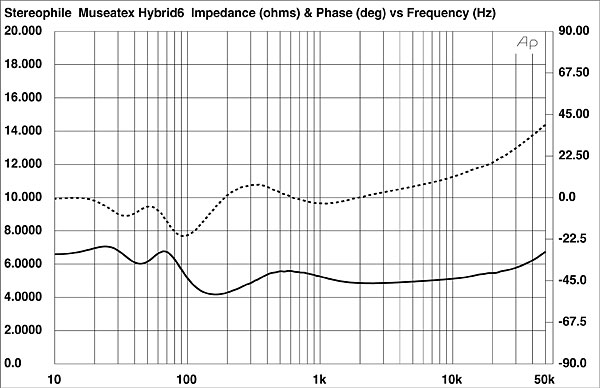
Fig.1 Museatex Hybrid 6, electrical impedance (solid) and phase (dashed) (5 ohms/vertical div.).
Museatex lists the '6's sensitivity as 86dB at 1m with the speaker driven by a nominal 8 ohm watt (2.83V). Using 20kHz-bandwidth MLS noise and B-weighting (our standard practice), the resultant FFT-derived power spectrum indicated a rather lower measured sensitivity, at around 83.5dB/W/m, 1dB/W/m higher than the BBC LS3/5a. Note that Museatex recommends a maximum of 100W for driving the Hybrid 6, due to voice-coil thermal constraints, so don't expect to crank out high spls with these speakers.
Fig.2 shows the nearfield responses of, from left to right, the port, the woofer, and the RTRE drive-unit. Apart from some interference-type ripples in the bottom octave of its passband, the response of the latter is quite flat in the nearfield above its rollout, while the crossover point to the woofer actually appears to lie nearer 400Hz than the specified 450Hz. The port has a bandpass output centered on 50Hz, while the woofer itself starts to roll out below 100Hz. How the port and woofer outputs add is shown to the left of fig.3, which is their vector sum weighted in the ratio of their radiating diameters. The speaker is flat down to 80Hz or so, below which it rolls off, reaching a –3dB point of 56Hz, –6dB at 49Hz, which is quite respectable for such a small driver.
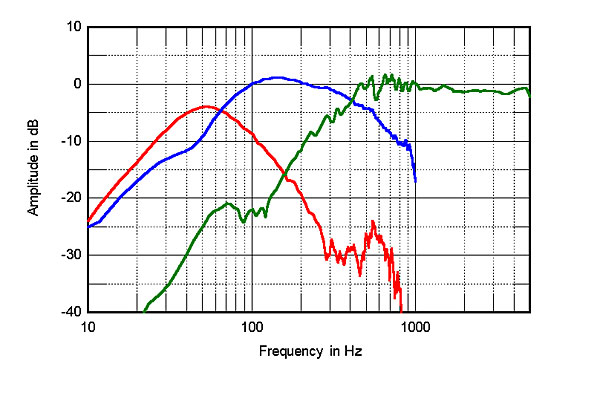
Fig.2 Museatex Hybrid 6, nearfield responses of midrange unit (green), woofer (blue), and port (res), respectively plotted in the ratios of the square roots of their radiating areas.
To the right of fig.3, above 200Hz, is shown the Hybrid 6's response averaged across a 30° lateral window at a 45" microphone distance on a 35"-high axis centered on the RTRE drive-unit's voice-coil. Despite the promise of the nearfield measurement in fig.2, out in the free field the speaker does, indeed, suffer both from a drastic loss of energy throughout the midrange, just as DO heard, and from a rather peaky low treble region. While the balance is flat through the mid-treble, the top octaves are peaky. (This graph was made with the speaker's grillecloth removed, as per Ed Meitner's instructions. Comparing the responses with and without the cloth showed severe comb filtering in the midrange due to reflections of the sound from the cloth.)
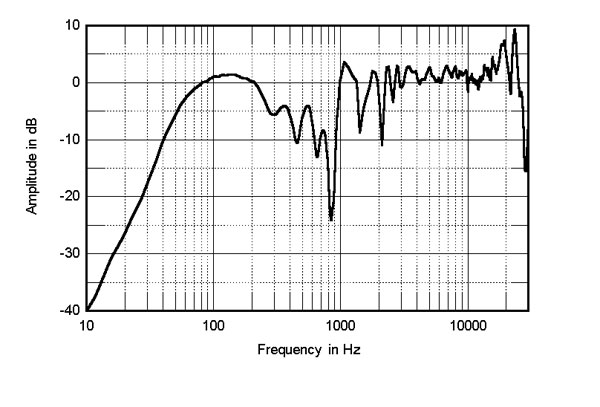
Fig.3 Museatex Hybrid 6, anechoic response on design axis at 45", averaged across 30° horizontal window and corrected for microphone response, with complex sum of nearfield midrange, woofer, and port responses plotted below 300Hz.
DO used the Loudspeaker Measurement System (LMS) from ATI to characterize the Hybrid 6's in-room frequency response on-axis at 1m for both channels. His measured responses (with 1/3-octave smoothing) are shown in fig.4. Both channels measure similarly, ruling out the possibility of a single "rogue" speaker sneaking through QC. The same peak at 1100Hz as in fig.3 can be seen, while again the 200–900Hz crossover region, where the two drivers overlap, shows a considerable lack of energy. This implies that the panel and midrange unit are out of phase in this frequency region, yet their individual impulse responses are both positive-going. The right-channel frequency response at DO's listening seat is shown in fig.5. The farther one moves away from the source, the more significant becomes the room's contribution. Still, most of the nearfield features of the response curve are recognizable. Note the relative recession of the upper mids and lower treble in relation to the core of the midrange. This is what probably accounts for the Hybrid 6's lack of life and sunshine.
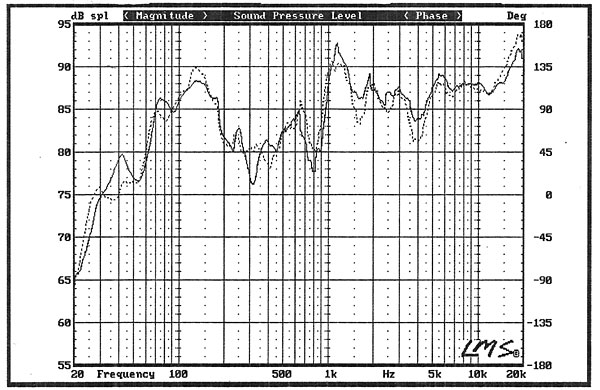
Fig.4 Museatex Hybrid 6, left-channel in-room frequency response on-axis at 1m.
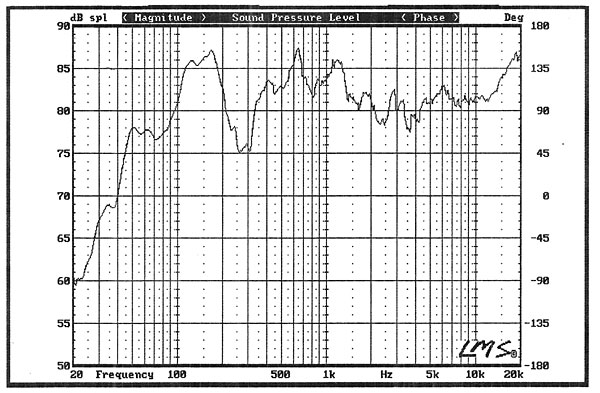
Fig.5 Museatex Hybrid 6, right-channel in-room frequency response on-axis at 1m.
Fig.6 shows the manner in which the Hybrid 6's response changes as the listener moves up and down. (Only the changes in response are shown in this graph, which means that the response on the reference axis appears as a straight line.) If the midrange suckout is due to the drive-units being acoustically out of phase in the crossover region, it should be possible to find vertically off-axis microphone positions where their outputs do sum correctly. It can be seen that the difference 7.5° above the top of the speaker's baffle and the difference level with the bottom of the RTRE panel (this axis a low 26" from the floor) feature a big hump in the midrange, implying that the responses on these axes will be much better balanced than on the 35"-high listening axis. This proved to be the case. A simple polarity reversal of either the woofer or the panel driver, therefore, should change things so that the speaker will sound more neutral on its main axis.
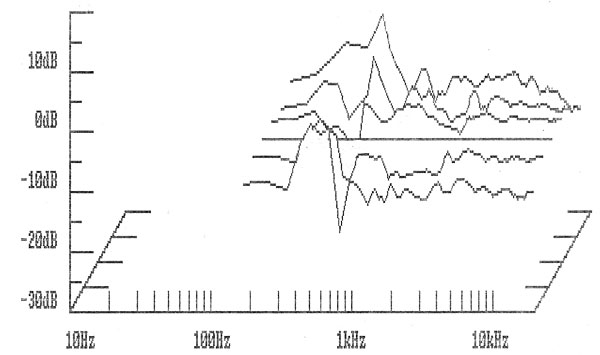
Fig.6 Museatex Hybrid 6, vertical response family at 45", normalized to response on design axis, from back to front: differences in response 22.5–7.5° above axis, reference response, differences in response 7.5–15° below axis.
We have experienced the same problem with other panel/dynamic woofer hybrid speakers. I can only conjecture that their designers listen much farther away from the speakers than either DO listens or I measure, in which case the greatly increased contribution of the room sound at the listening position could disguise this drive-unit integration problem.
There is some good news in fig.6, which is that the panel driver does have excellent high-frequency dispersion in the vertical plane. The RTRE principle does appear to allow the panel to simulate a point source in the treble, something that is confirmed by fig.7, which shows the changes in response as the listener moves around to the speaker's side. The top octave starts to roll off more than 15° off-axis, but the lower treble output remains strong to 60° off-axis. At these extreme angles, however, the speaker's output in the upper midrange is starting to suffer from a dipole cancellation notch.
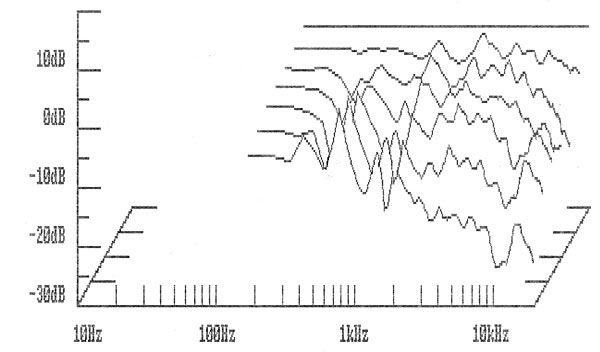
Fig.7 Museatex Hybrid 6, lateral response family at 50", normalized to response on design axis, from back to front: reference response, differences in response 15–90° off axis.
In the time domain, the Hybrid 6's impulse response on the listening axis at a microphone distance of 45" can be seen in fig.8. The generally symmetrical shape implies a first-order crossover, but the ringing indicates some HF resonances. You can just make out some lower-frequency undulations after the 5ms mark. These are not due to room reflections, but are a feature of the speaker's output. Calculating the '6's step response from fig.8 gives the graph shown in fig.9. The step shape is not very good, presumably because the woofer output cancels that of the RTRE panel in the first millisecond or so after the initial up-down pulse. But note again the lower-frequency ringing in this graph, more prominent than in fig.8 due to the integrating action of this calculation exaggerating the effect of the lower frequencies.
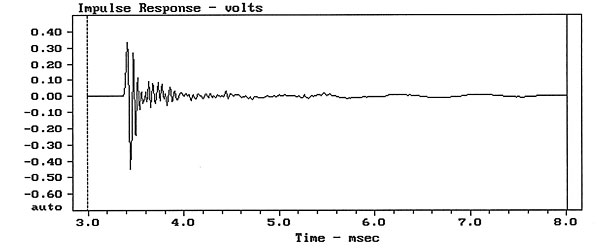
Fig.8 Museatex Hybrid 6, impulse response on design axis at 50" (5ms time window, 30kHz bandwidth).
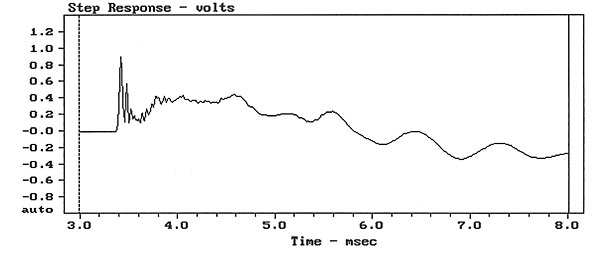
Fig.9 Museatex Hybrid 6, step response on design axis at 50" (5ms time window, 30kHz bandwidth).
This ringing is strikingly revealed in the cumulative spectral-decay or "waterfall" plot (fig.10) calculated from fig.8 as the strong ridge centered on 1150Hz. There are also some other strong modes in the lower treble and the top octave. Despite the superbly flat nearfield response of the RTRE drive-unit, the promise of this new drive-unit technology has yet to be realized.—John Atkinson
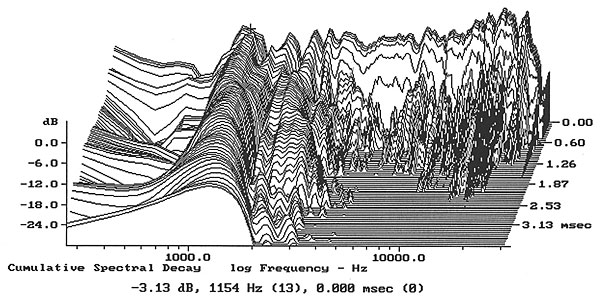
Fig.10 Museatex Hybrid 6, cumulative spectral-decay plot on design axis at 50" (0.15ms risetime).
- Log in or register to post comments




































